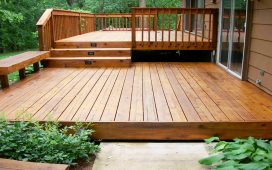Although cleaning high windows can seem difficult, it becomes easy with the correct tools and approach. A water-fed pole is one of the greatest instruments available for this work. Apart from keeping your feet firmly on the ground, it lets you reach those challenging, tall windows without using ladders or scaffolding. It is a detailed walk-through lesson on securely cleaning high windows with a water fed pole.
Choose the Right Water Fed Pole
Choosing the correct water-fed pole for your needs comes first. Usually falling between 10 and 65 feet, these poles vary in length. Most two- or three-story homes can be cleaned with a pole between 20 and thirty feet for domestic use. Ensure the pole is made of lightweight materials, including carbon fibre or aluminium. Although they cost more, carbon fibre poles are lighter and simpler to handle‚ especially when working for long periods.
Set Up Your Water Source
To leave windows spot-free, a water-fed pole system calls for pure, mineral-free water. Minerals dissolved in tap water form streaks or stains as they dry. Either a DI (deionisation) filter or an RO (reverse osmosis) system should be part of the water purification mechanism you employ. After purifying, link the water-fed pole to the water source. Most systems allow you to manage the water flow as needed by including hoses connecting to an exterior tap.
Attach the Right Brush
What cleans the pole at its end? The brush there does. A soft-bristled brush is ideal for high windows since it will not scratch the glass but will efficiently remove pollen, filth, and grime. Ensure the brush has a built-in water jet system to clean the windows while you work. Multiple jets made possible by some water-fed poles increase water flow for quick rinsing.
Use the Correct Technique
It’s time to clean once you have the pole put up and the water supply linked. Starting with the water jets, wet the window. Holding the pole at an angle that lets the brush fully touch the glass. Work from top to bottom, loosening dirt with fluid and vertical strokes. Given their tendency to gather additional dirt, pay close attention to edges and corners. Once the window is cleaned, keep rinsing it with water to guarantee you eliminate all trash.
Check Your Work as You Go
You should be checking your progress as you clean. Now and then step back to view the window from other directions. It guarantees that you won’t be leaving any missed places or streaks. Although you might not have an excellent view of high windows, a quick peek from the ground can highlight areas that require extra maintenance.
Mind Your Safety
Safety is important when working with long water-fed poles. At their full length, these poles can become uncomfortable to handle. To avoid mishaps, always ensure you stand on level, steady ground. Don’t force the pole if it feels very weighty or awkward. Frequent breaks help you prevent back or arm strain. Be aware of overhead hazards, including gutters, tree limbs, or power lines that can block your route is yourself.
Maintain Your Equipment
Maintenance of your equipment is crucial following every cleaning session. Cut the pole off from the water source and leave it to drain. To clear any gathered trash, clean the brush head, then look for wear. Correctly storing your pole, that is, ideally in a cold, dry environment, ensures it stays in good shape and lasts longer.
Advantages of Using a Water-Fed Pole
A water-fed pole system helps you clean high windows without using ladders, lowering the risk of falls. Purified water is environmentally friendly since it leaves windows streak-free, so no detergent is needed. Since there is no need for several passes with several tools, it saves time.
Conclusion
Cleaning high windows effectively and safely is done by using a water-fed pole. Perfect setup, correct technique, and safety awareness can help you to get clear windows without running the danger of ladder climbing. Always pick high-quality tools. Keep in mind that optimal outcomes depend on their longevity. This approach guarantees minimal effort and sparkling cleanliness for the highest windows.












